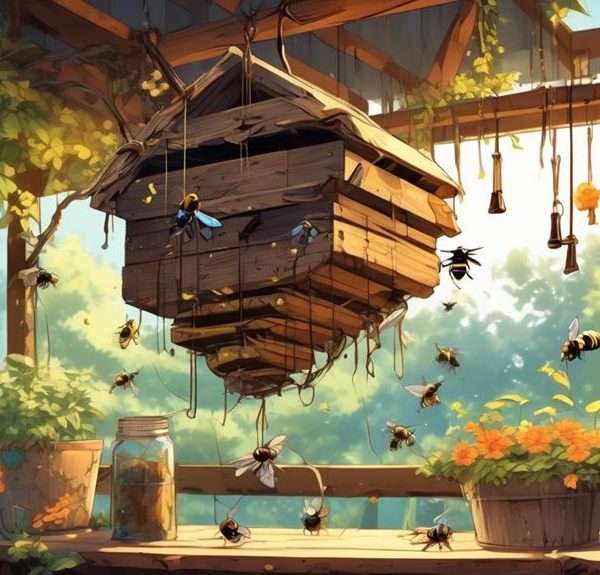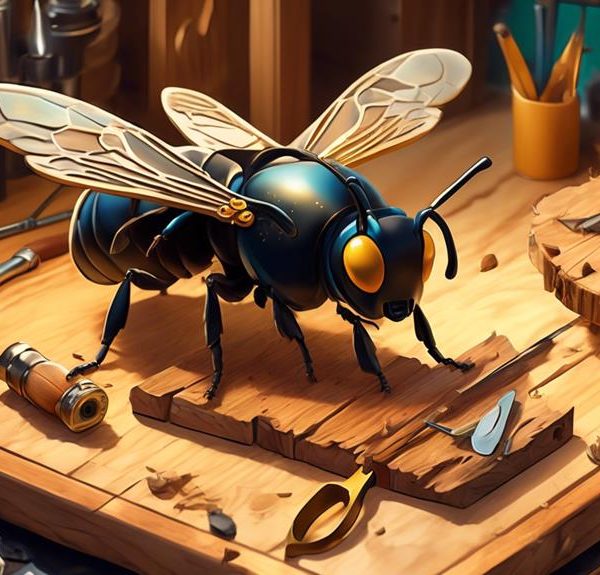Witness the remarkable science behind how carpenter bees gather pollen, a dance of nature that's as fascinating as it is essential.
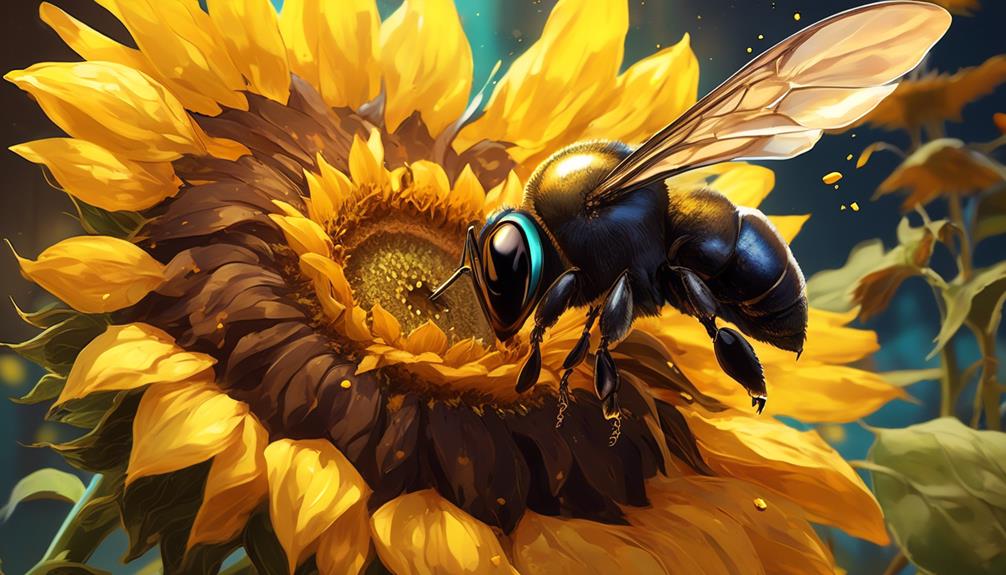
How Do Carpenter Bees Gather Pollen
Like a master artist with a palette of colors, a carpenter bee meticulously gathers pollen, playing a crucial role in our ecosystem's tapestry. You might wonder how these bees, with their sleek bodies and shiny, often black exteriors, manage to carry out this essential task. Well, it's not as simple as just flying from flower to flower. There's a sophisticated science behind their technique that's been perfected over millennia. One might say it's high time you got a closer look at their craft.
However, just as every masterpiece has its secrets, so too does the intricate dance of the carpenter bee and its pollen gathering. We'll explore this fascinating world, but be forewarned, the more you learn, the more questions you'll find yourself asking.
Key Takeaways
- Carpenter bees gather pollen on specialized hairs on their hind legs and abdomen.
- They actively collect and transport pollen through a process called 'buzz pollination'.
- Carpenter bees are more efficient in pollination compared to butterflies.
- Their pollen-gathering habits contribute to the genetic diversity of plants and support biodiversity in ecosystems.
Understanding Carpenter Bees' Anatomy
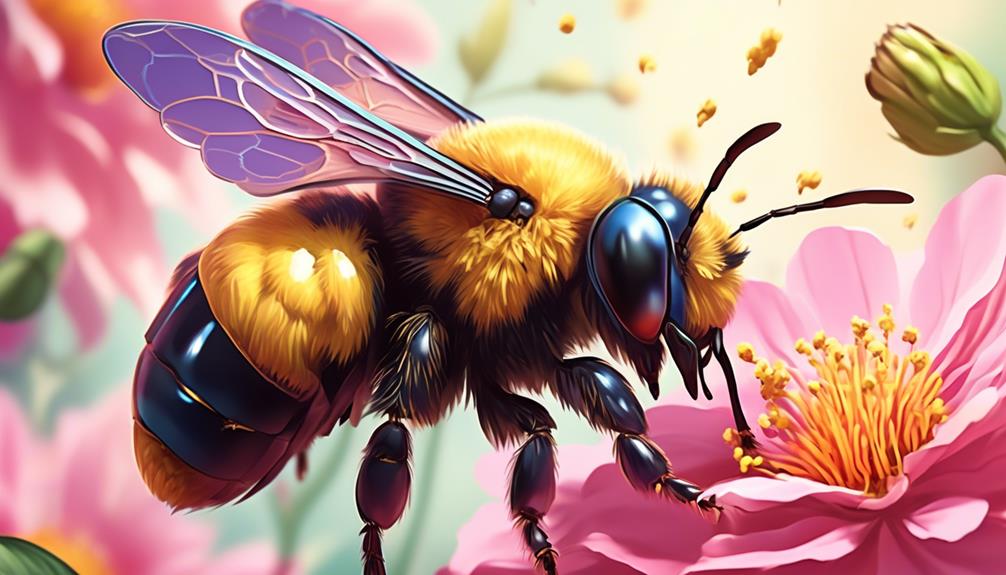
Diving into the intricate details, you'll find that the anatomy of a carpenter bee is uniquely adapted for its role as a master pollinator. Its large, robust body, measuring up to 25mm in length, allows it to carry significant amounts of pollen on its hind legs and abdomen. These body parts are covered in specialized hairs, designed to efficiently collect and store pollen.
Carpenter bees possess a long, tube-like tongue, or proboscis, which is perfect for accessing nectar deep within flowers. This proboscis, combined with their strong jaws, enables them to bore into wood and build nests, a trait that gives them their name.
Their compound eyes, composed of thousands of tiny lenses, provide a broad field of view. This feature, along with their ability to see ultraviolet light, guides them to the most pollen-rich flowers.
The Pollination Process Explained
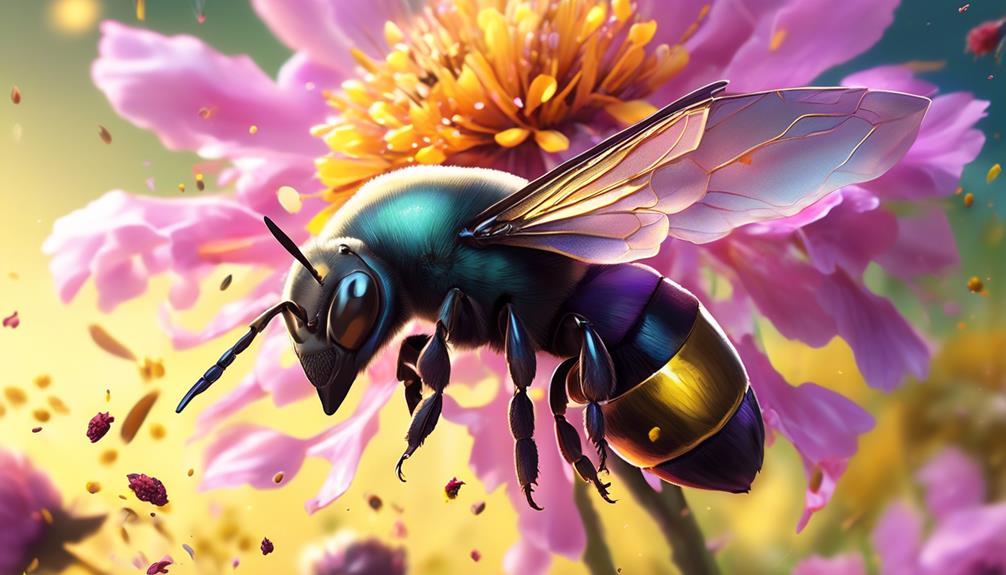
Armed with this understanding of the carpenter bee's physical adaptations, let's now explore how these unique traits aid in the crucial process of pollination. As you may know, pollination is a symbiotic relationship between flowers and pollinators like bees. It involves the transfer of pollen from the male parts of a flower to the female parts of the same or another flower.
Carpenter bees, with their sturdy bodies and specially adapted hind legs, are perfect for this job. When they land on a flower, pollen grains stick to their fuzzy bodies. As they move from flower to flower, some of this pollen rubs off onto the female part of other flowers, facilitating fertilization and the production of seeds.
Let's break this down more systematically:
Step | Carpenter Bee Role | Pollination Impact |
|---|---|---|
Landing | Bee settles on flower | Pollen attaches to bee |
Foraging | Bee moves around flower | Pollen spreads within flower |
Departure | Bee flies to next flower | Cross-pollination occurs |
Return | Bee returns to nest | Pollen is used for food |
This table summarizes how the carpenter bee, through its physical traits and behaviors, plays a vital role in the cycle of life.
Carpenter Bees Vs. Other Pollinators

Now, let's compare how carpenter bees stack up against other pollinators in their effectiveness and unique contributions to the pollination process.
Unlike honeybees and bumblebees that collect pollen on their hind legs, carpenter bees have a unique adaptation: they gather pollen on their abdomen. This distinct method is referred to as 'buzz pollination', where they vibrate their bodies at a specific frequency, shaking loose the pollen from the flower.
When compared to butterflies, which are also significant pollinators, carpenter bees come out ahead in terms of efficiency. Butterflies merely brush against the pollen and have it stick to their bodies, but carpenter bees actively gather and transport it. This active collection results in a higher rate of successful pollination.
But it's not just about quantity. Carpenter bees also contribute to the diversity of plants pollinated. They're not as picky as some bees that only visit certain types of flowers. They'll pollinate a wide range of plants, leading to a more diverse ecosystem.
The Role of Pollen in Bee Nutrition
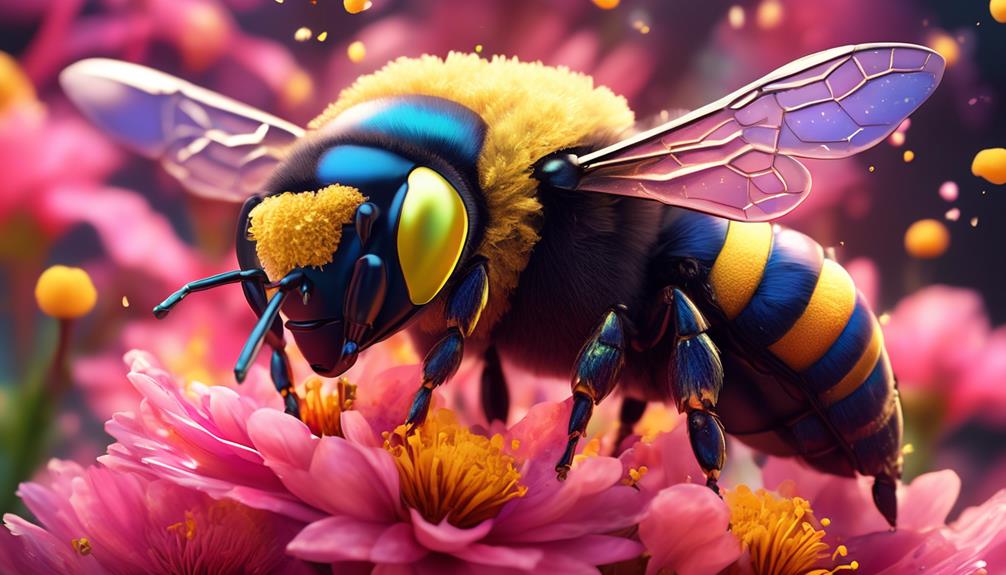
While it's clear that carpenter bees play a vital role in the pollination process, it's equally important to understand the role of pollen in their own nutrition.
As you delve deeper, you'll find that pollen is more than just a vehicle for reproduction; it's a crucial source of sustenance for these industrious insects.
When carpenter bees forage, they're not just on a mission to assist plant reproduction. They're also gathering food. Pollen, in particular, is a major dietary staple, packed with proteins, lipids, vitamins, and minerals necessary for their development and growth.
Consider the pollen grain's structure. It's encased in a hard shell, a sporopollenin exine, which protects its nutritional bounty. Bees have evolved to break down this hard casing using their mandibles and enzymes, enabling them to access the nutrient-rich cytoplasm within.
But it's not just adult bees that rely on pollen. Larval bees, too, are dependent on a diet of pollen and nectar. In fact, without adequate pollen supplies, bee colonies can struggle to raise the next generation.
Impact of Carpenter Bees on Ecosystems
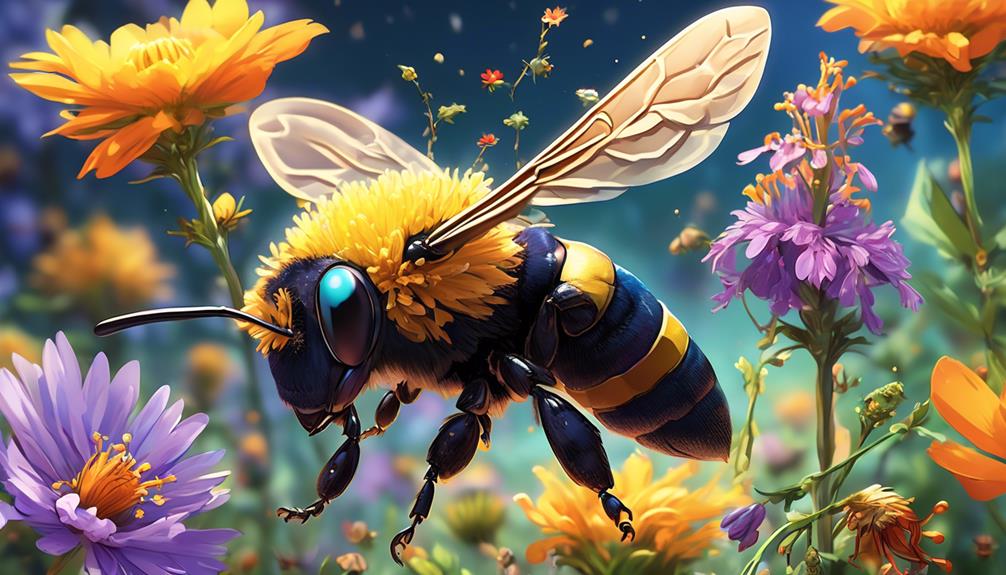
Delving into the impact of carpenter bees on ecosystems, you'll find that these insects have a significant effect on the biodiversity and health of plant communities. They're not just ordinary bees; they play a crucial role in pollination, which is vital for plant reproduction. By transferring pollen from the male parts to the female parts of flowers, they facilitate the production of fruits and seeds.
To give you a clearer understanding, let's look at this table:
Impact | Description |
|---|---|
Pollination | Carpenter bees are highly effective pollinators, contributing to the genetic diversity of plants. |
Ecosystem Services | By pollinating, they assist in food production, significantly impacting ecosystem services. |
Biodiversity | Their pollination habits support biodiversity, as various plant species depend on them for reproduction. |
However, you should also know that carpenter bees can cause structural damage to wooden structures, as they tunnel into wood to nest. But remember, this potential downside doesn't diminish their ecological importance. Their role in ecosystems is vital for plants, other animals, and even us humans. You see, carpenter bees are more than meets the eye.
Conclusion
In conclusion, you've seen how the unique anatomy of carpenter bees enables efficient pollen collection. Unlike other pollinators, they play a crucial role in our ecosystem's balance and health.
Remember, their nutrition relies heavily on pollen, which also assists in pollination. Therefore, appreciating these industrious insects goes beyond mere fascination; it's understanding their significant ecological contribution.
They're not just industrious woodworkers; they're vital pollinators too.

